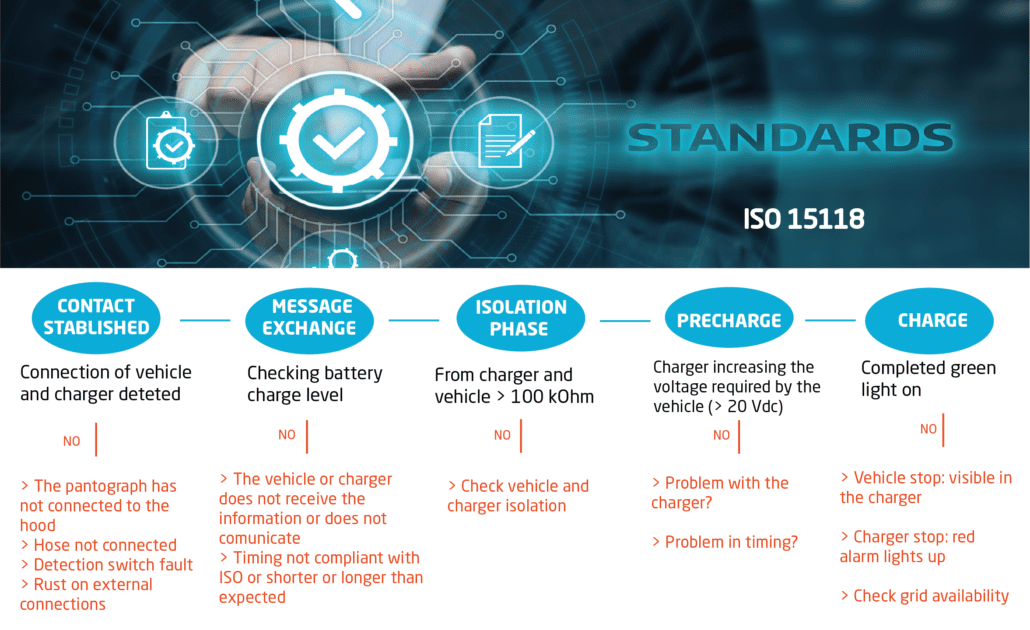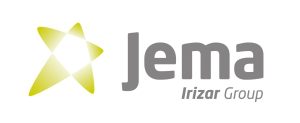ISO 15118 is the standard that defines interoperability in the process of charging electric vehicles. The aim of the standard is to develop a standard vehicle-charger communication to democratise and advance sustainable mobility.
One of the most important projects working on the development of the ISO 15118 standard is the ASSURED project, of which Jema has been a partner since its launch.
CHARGER & BUS COMMUNICATION: STAGES
Vehicle-charger communication is divided into five stages – contact established, message exchange, isolation phase, precharge and charge.
- Contact established: contact is established when the vehicle detects the charger through the CCS 2 connector or the pantograph.
- Message exchange: the charger and the vehicle start to exchange messages regarding the battery’s charge level.
- Isolation phase: in this phase, the vehicle and the charger check their isolation. When both have checked the isolation and it is OK, the vehicle takes the initiative and it will supervise the isolation during charging.
- Precharge: in the precharge phase, the charger increases its voltage to that required by the vehicle. For example, if the vehicle requires 500 V and that charger is at 410 V, the latter increases its voltage to that which the vehicle needs (with a margin of 20 V DC).
- Charge: charging occurs with a voltage and current curve according to the vehicle’s demand. Charging has ended when the charger shows the green light.
CHARGER & BUS COMMUNICATION: POSSIBLE SITUATIONS
CP cable connection error
In the event of a connection error by the CP cable, the connections must be checked. The first step is to check the pantograph or cable and the external connection elements to check that they are not damaged; check that the cable is properly connected to the vehicle and that the connection cable of the cable itself is in good condition.
ISO 15118 interpretations
One of the most common problems is the interpretation of the standard by the vehicle manufacturer and the charger manufacturer. To reach the same interpretation of the standard, Jema takes traces through the diagnostic tools it works with, analyses them and starts a process of sharing between the technical areas of both parties (bus and charger manufacturers).
JEMA DIAGNOSIS OF CHARGING ERRORS
CAN/PLC traces of the charger and bus communications can be remotely retrieved by Jema to check that all the times set by the standard are met by both parties.
In addition to these traces, we can use the MODBUS communication and the charger configuration tool to detect potential network or other faults that may have interrupted the charging process.
To date, Jema chargers have been tested with the following makes:
Volvo
Mercedes-Benz
Heuliez
Iveco
Irizar
VDL
…





